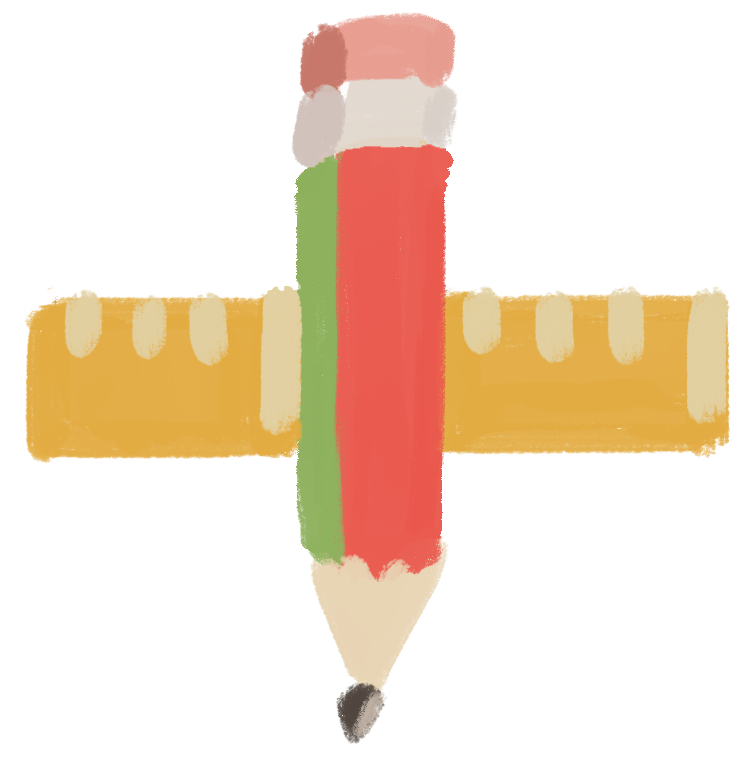The Garden and The Gospel
I saw an Instagram post several months ago that shared the parallels between tending a garden and living our lives as Christians. The reel was set to soft music and followed a gardener laboring in the dirt while the sunbeams sparkled in the camera lens. The creator connected a tiny seed to the beginning of our walk with Christ and our rebirth in Him. They compared the tending of the garden sprouts to our walk with Jesus in the early days, companion planting to our relationships, the weeds to trials, and the harvest to the fruit we bear as believers. I’m sure I watched it three or four times, but I haven’t been able to find it again. As a gardener myself, it resonated with me. As an elementary teacher, its simplicity planted the beginnings of a new idea in my mind.
Around that same time, our pastor shared a message focusing on the parable of the sower. The parable is found in Matthew 13 and is a story used to teach both young and old. Jesus often shared through story in an attempt to connect with people. Our pastor shared that parables are meant to be an invitation to both our head and our heart. The parable of the sower would have resonated with people during this time because of its common practice. If you are unfamiliar with the parable it describes the different places that seeds fell as the sower scattered them. Each different location being an equivalent to how we receive and live the Word. For example, the one who hears the truth but doesn’t understand is like a seed that falls and a bird snatches it away or the seed that falls on rocky ground is like someone who hears the word joyfully but does not allow the Word to take root. The passage continues sharing examples of different seed scenarios. It’s interesting to think that after hearing this parable so many times, we can continue to glean new and powerful information, or in this case, inspiration.
After seeing the Instagram reel and after our study in Matthew at church, the idea looped through my mind for several weeks. I really started to think more and more about conveying these thoughts to children in a meaningful way. A great joy for me over the past couple of years has been the blessing of working in a Christian school. Sharing truth when teaching in all subjects is freeing and affirming, important and moving. But science is like another experience entirely. The ability to speak with students about the wonder of their Creator is a gift. A gift because I am allowed to integrate Scripture and share it, but also a gift in that I am reminded of His genius each time we explore a topic together.
I wanted to begin the year with a unit connecting the garden and the parable, so I completely flipped my original curriculum map and began rewriting my unit on ecosystems. In our ecosystems studies, we spend a great deal of time studying plants: their parts, their cells, their needs. I needed a way to connect these concepts to our lives as Christ-followers. To begin, I chose our class verse. Matthew 13:23, “As for what was sown on good soil, this is the one who hears the word and understands it. He indeed bears fruit and yields, in one case a hundredfold, in another sixty, in another thirty.” I also searched for other verses that would relay the significance of a brilliant Creator.
We began with the parable of the sower and by planting seeds of our own. We started with a grow tower, grow lights, and seed plot trays. We studied the needs of our seeds: water, sunlight, air, space, etc. Students then listed out necessities for our lives as Christians: Scripture, relationships, prayer, truth, and so on. I wanted them to hold on to these ideas throughout each portion. We also conducted soil sample tests to ensure that our soil had what it needed to help our seeds thrive- nitrogen, potassium, phosphorus. As our seeds began to sprout, we discussed how each seed seemed to be receiving what it needed to grow and thrive. I found it a good time to introduce controls and variables, as well. We decided on several independent variables and labeled those plants to observe in the weeks to come. For one plant, we took away an efficient water source. For the second, we removed sunlight and for the third, we added fertilizer. Our control was left with consistent essentials. I asked the students to make predictions about what might happen to each. This also led us to a conversation about what happens in our Christian lives when we subtract what God has told us is important. We concluded that plants that received inadequate water could be compared to us when we do not study Scripture. In addition, we noted that the plant that did not receive enough light was like a person who needs time spent in prayer, a connection with Jesus. The plant that received fertilizer seemed like a Christian engaging in meaningful connection with other believers and one who would produce fruit and share the Gospel with others. None of these were meant to be taught as “checklist” items in our Christian faith, but those pieces that contribute life and connection to the One we serve.
Following our study of plants, we started our exploration of animals, microbes, and the ways in which God has designed all of it to work together. Once we gained a greater understanding for how ecosystems function, students were tasked with creating a small ecosystem of their own- three plants, three animals, and two decomposers. It took days! My goal was for the students to see the amount of planning that went into just one plant, just one animal. I wanted them to couple the idea that God created every thing and every system with the idea that it was taking us a great amount of time and effort to create just one small ecosystem. Heartwarming questions and comments were made every day: “How did He do this? How did He think of all of this? We aren’t even designing all of the different cells. We are only doing the basics!”
As with any project, the reflection process is always my favorite. The best thoughts from the entire study came from just one question I listed on their reflection handouts. It stated, “We were able to use our imagination to create plants and animals that would live in one ecosystem. Imagine our magnificent Creator. He created all plants and animals and made them to work together in an ecosystem. He made every last part of them, down to the cells inside of them. We could never begin to understand or comprehend such AMAZING power. How does this make you feel about God as our Creator? What thoughts come to mind when you think about the amount of time it took us to create even just this small number of living organisms vs. what He has done?” These are big thoughts for 10 year old’s, but my prayer is that it makes some kind of impact in their lives whether it be now or later.
I also have a hope for you. I’m hoping that you will find this post helpful in guiding the young ones in your life. Maybe you’re a teacher who wants to share these lessons with your class. Maybe you’re a parent who is looking for a tangible way to study this with your own children. We are not entering the ideal growing season, but growing small plants in your windows or with grow lights is still possible. Perhaps you could save this lesson for springtime. I have included links to the printable resources I created to use for notetaking and reflection if you decide to try it out.
In the summer, I spend most every day doing something in my garden. I spend some amount of time tending to its needs whether its two minutes or two hours. I cannot say with conviction that I always do the same in my Christian life. I am often and easily distracted by the pace of life. At times, the fruits my life produces are not worth harvesting in the least. I forget about the impact that this neglect has on me and on those around me. But thankfully, I do not serve a works-focused God. Thankfully, I can be reminded through a simple parable and through conferring with kids, that our relationship with Jesus is always worth growing. And maybe they will remember that too.
Resources for this lesson:

